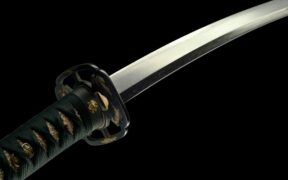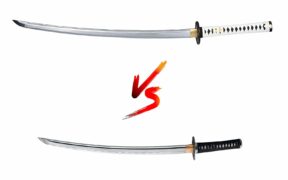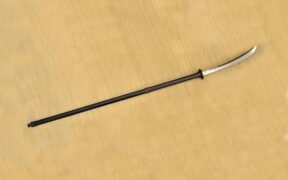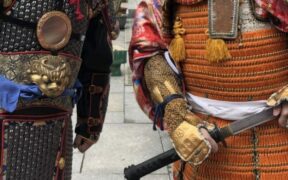Our content features commercial links to our products, committed to transparent, unbiased, and informed editorial recommendations. Learn More
Wakizashi: The Famous Japanese Short Sword
NO AI USED This Article has been written and edited by our team with no help of the AI
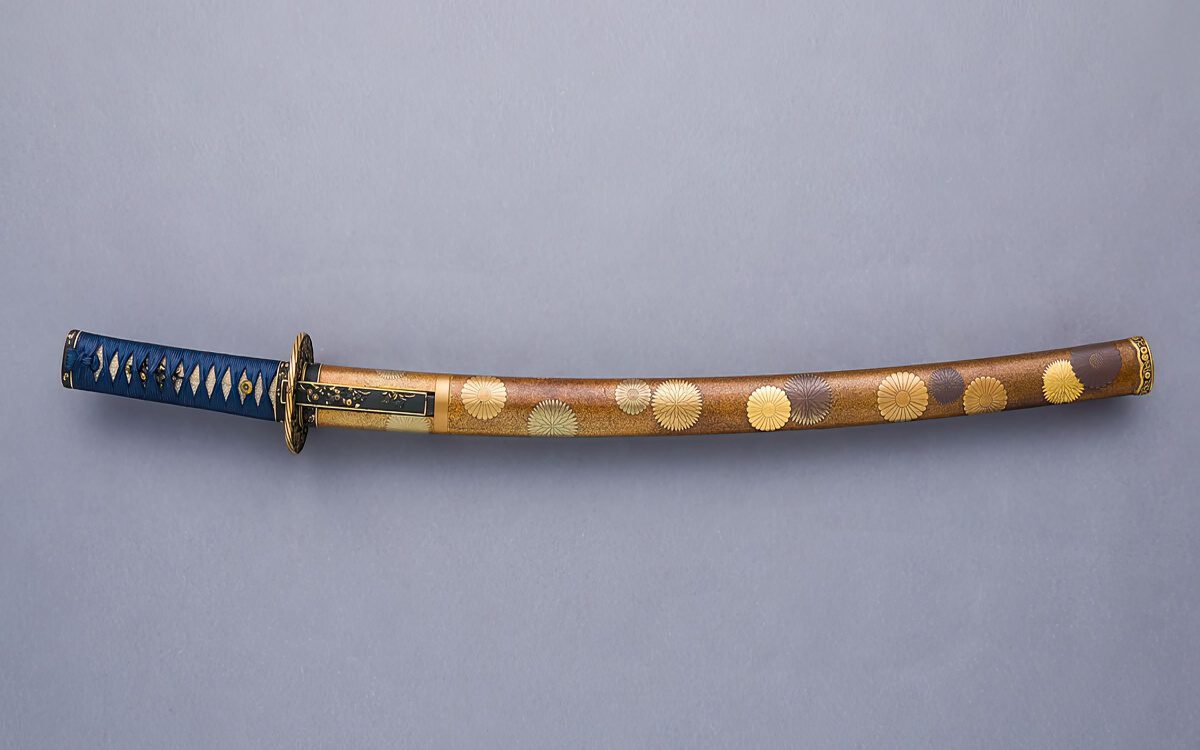
In feudal Japan, the short sword wakizashi served as an efficient secondary weapon of the samurai, who traditionally carried it with the katana. The warrior wore it indoors when the longer sword was set aside at the entrance and utilized it against opponents with longer weapons.
Let’s explore the unique characteristics of the wakizashi, why it became one of the preferred weapons for combat, and its history and use in martial arts.
Characteristics of the Wakizashi Sword
The wakizashi sword has a shorter blade than the katana, but it has all the features of the longer Japanese sword.
Here are the characteristics of the Japanese short sword:
Metal and Construction
The Japanese samurai swords were among the finest weapons ever made. Traditional swordsmiths forged them from tamahagane steel and used a complex process to create blades that were hard but not brittle. The tamahagane is high carbon steel smelted from iron sands and made from the traditional tatara furnace in Japan.
However, traditionally-made Japanese swords including wakizashi, forged from tamahagane are highly regulated and cannot be mass produced. So, many non-traditional swordsmiths outside Japan strive to create replicas with damascus steel or high carbon steel blades.
Blade Appearance
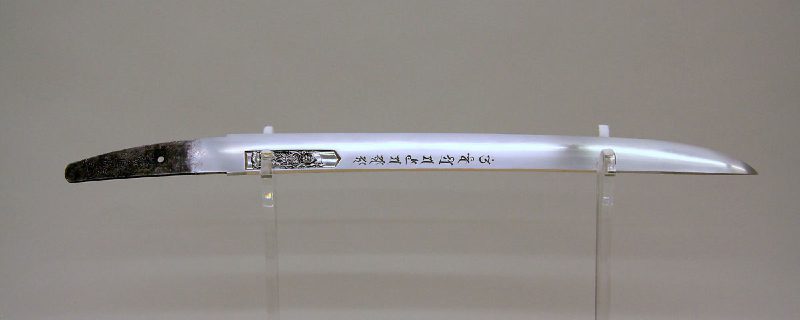
The wakizashi is single-edged and slightly curved, which is the characteristic shape of Japanese swords. Japanese blades are valued for their aesthetic features, especially the hamon or temperline pattern, achieved by covering the blade in the clay of varying thickness and then quenching it in water. Many wakizashi blades featured horimono or decorative carvings, from floral designs to Buddhist motifs and Sanskrit characters.
Size and Length
Japanese sword blades between 1 and 2 shaku (30.3 to 60.6 centimeters or 12 to 24 inches) are considered short swords or wakizashi. Generally, the blade length starts from the base of the blade, excluding the tang, to the tip.
The short sword can be described as ko-wakizashi (little wakizashi) or o-wakizashi (large wakizashi). A ko-wakizashi blade has a maximum blade length of 1 shaku 5 sun (45.45 centimeters), while the o-wakizashi is close to 2 shaku.
Sword Mounting
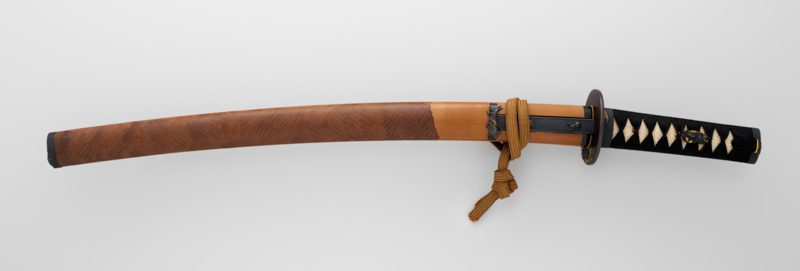
Koshirae is the Japanese term for a complete set of sword mounts, including the hilt, sword guard, and scabbard. The wakizashi koshirae is similar to the katana koshirae, but only shorter. A single wakizashi blade often had several sets of koshirae, which were frequently changed according to the occasion.
Hilt (Tsuka)
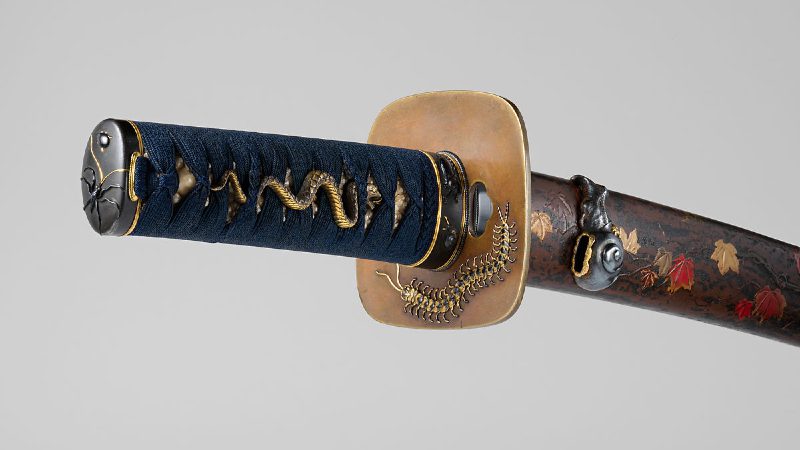
Traditionally-made wakizashi swords had hilts made of magnolia wood. The hilt has a ray skin covering enhanced by the lozenge-shaped openings of the silk braid wrapping called ito. On the other hand, the menuki ornament on the hilt was not just decorative but also enhanced the wielder’s grip on the weapon.
Sword Guard (Tsuba)
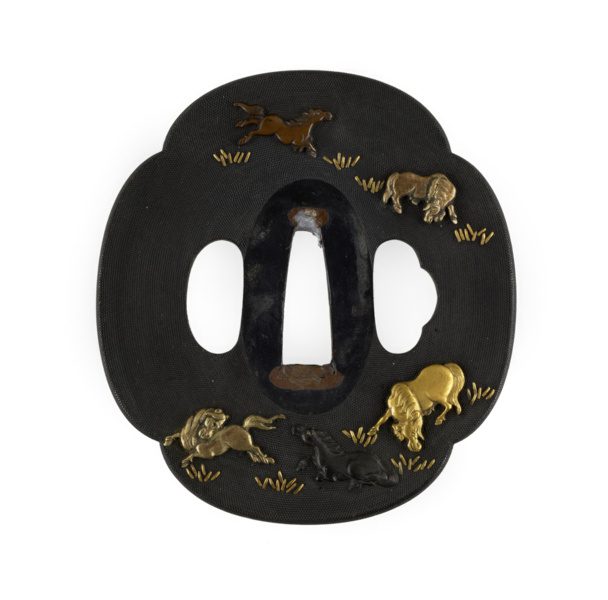
The tsuba or sword guard protected the user’s hand, but it varied greatly in shape and size. It also reflected the craftsmanship of Japanese artisans with ornamental designs, though those that were purely decorative were the least functional. Japanese tsuba eventually became very elaborate or delicate by the 18th and 19th centuries when artisans started to inlay colorful stones on sword guards.
A wakizashi sword often had a tsuba with openings to accommodate the kozuka—handle of a small knife called kogatana—and a kogai hairpin. The kogatana was an all-purpose blade often used as a letter opener while the kogai was an implement to arrange a samurai’s hair. The handles of the two often had matching decorations and slipped into a pocket on the wakizashi scabbard.
Scabbard (Saya)
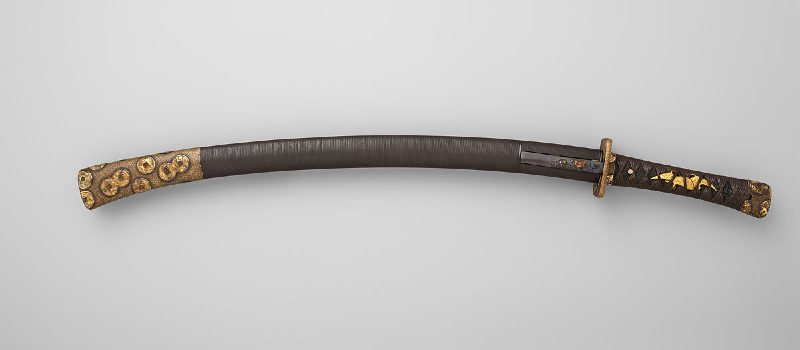
Like the hilt, traditionally-made wakizashi swords had scabbards made of magnolia wood. The sword can be mounted in either shirasaya, a plain wooden scabbard, or koshirae with lacquered scabbard and elaborate metal ornaments.
History of the Wakizashi Sword
The Japanese term wakizashi literally means worn at the side. It was the short companion sword of the samurai, worn from waking until sleeping and usually kept nearby at night.
Wakizashi in a Daisho Pair of Swords
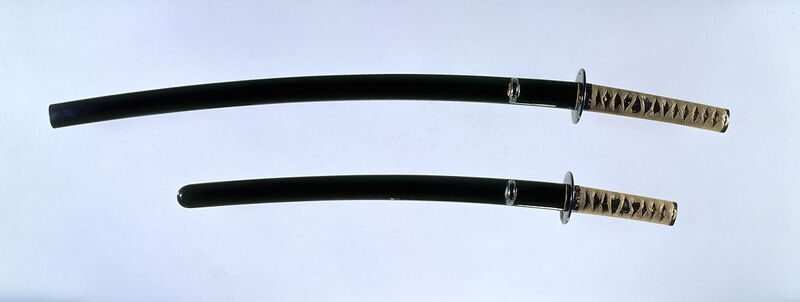
Daisho literally means long and short or large and small. It is the combination of daito (long sword) and shoto (short sword), referring to the well-known pair of katana and wakizashi worn by samurai when on duty. The daisho first appeared towards the end of the Muromachi period, from 1338 to 1573.
By the Edo period, from 1603 to 1867, it became common for a daisho to have an identically mounted sword pair. The mountings of a daisho, the daisho koshirae, could be very elaborate for formal or ceremonial use and reflected the status, wealth, and taste of its wearer.
The government also imposed that only the samurai class could wear the daisho, making it the symbol of their authority. However, the wakizashi was not exclusive to the samurai, as merchants and townsmen also wore the short sword.
Ko-Wakizashi and O-Wakizashi
The Tokugawa government strictly regulated the swords, such as how long they should be and who was allowed to use them. A wakizashi blade was limited to 1 shaku 8 sun (54.54 centimeters), and the katana to 2 shaku 8 sun (84.84 centimeters).
In 1668, the Muto-rei law was issued, prohibiting all persons not belonging to the samurai class from wearing swords with a blade length over a ko-wakizashi. A ko-wakizashi, literally small wakizashi, was fixed to a maximum blade length of 1 shaku 5 sun (45.45 centimeters).
When the law was relaxed, travelers traveling on the dangerous Tokaido—a historic road that connected Kyoto and Tokyo—were permitted to wear an o-wakizashi (large wakizashi) for self-defense. It was a wakizashi, measuring up to 1 shaku 8 sun (54.54 centimeters).
The Wakizashi Sword in Combat
Samurai swords were never the primary weapons on the battlefield. The warriors mainly used bows, spears, and other edged weapons and only utilized swords for close quarters combat. The wakizashi sword was efficient against longer weapons, such as spears. It had a limited reach as a short sword but was also more lightweight than a long sword and allowed faster movements.
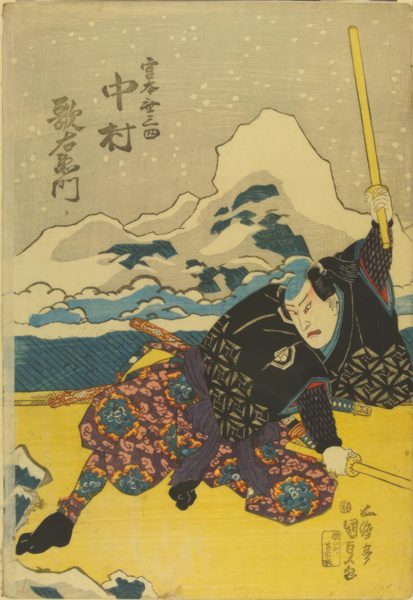
Generally, a wakizashi was particularly appropriate in close-quarter fighting, while the katana was efficient in most situations. Then, the tanto, a Japanese dagger, would be the weapon of last resort. In some instances, a wakizashi can be used with a katana sword at once. Swordsman Miyamoto Musashi even became famous for his two-blade fighting technique.
Also, the samurai initially used the wakizashi for the ritual suicide called seppuku and then later preferred the tanto. Back in the day, the seppuku was considered honorable, as it avoided the dishonor of falling into the hands of the enemy after battlefield defeats. There was also obligatory seppuku that served as capital punishment for a samurai.
Uses of Wakizashi in Martial Arts
Like the Japanese katana sword, the wakizashi could also be used kenjutsu-style for stabbing, cutting, and parrying. However, very few martial arts practitioners train in wakizashi, as the short sword is utilized in the more advanced levels of iaijutsu.
The Yagyu Shinkage Ryu is one of the oldest schools teaching short sword techniques, and there are also very few practitioners of double-sword techniques or nito-waza.
Facts About the Wakizashi Sword
The wakizashi was used by samurai and commoners of certain classes, who used it for self-defense when traveling. When wearing the daisho, the samurai wore the wakizashi on the left side of his body, with the cutting edge of both swords facing upwards.
The wakizashi served as a backup weapon of the samurai.
The wakizashi was the shorter companion sword of the katana in a daisho. However, the etiquette required a samurai to remove his long sword at the entrance when visiting lords or other households. On these occasions, the wakizashi accompanied the warrior into the building as his source of protection, apart from daggers and concealed weapons.
The samurai carried the wakizashi and other blades in the battle.
The term jin-wakizashi refers to a battlefield wakizashi designed to be worn with armor, not semiformal everyday clothing. However, the term can also refer to a dagger-sized koshigatana worn with armor that was an accompanying blade to the earlier tachi.
The samurai also utilized the tanto, a shorter-bladed weapon, usually translated as a dagger. The famous illustration of Honda Tadakatsu portrays him wearing the wakizashi and the tanto dagger. In modern terminology, the companion side-arms may refer to as either wakizashi or tanto.
Short swords were already in use at a very early time before the development of wakizashi.
The kodachi, meaning small tachi, emerged due to the necessity of the aristocrats to have a self-defense weapon longer than a dagger-length blade. During the Kamakura and Nanbokucho periods, some kodachi had blades measuring about 60 centimeters long. Hence, they were shorter than a tachi, a precursor to the katana. Kodachi was often mounted and worn like a tachi, suspended from the belt with the edge facing down, but their purpose remains unknown.
The so-called sunnobi tanto could also be considered a wakizashi.
Nowadays, the Japanese Firearms and Sword Law defines a tanto as a blade of less than 30 centimeters long, making it a dagger, not a short sword. Before the law was given, many blades longer than 30 centimeters were classified as tanto.
The sunnobi tanto were oversized daggers, often from the Nanbokucho and Muromachi periods, ranging from 33 to 36 centimeters long. Since Japanese blades today are classified according to blade length, the sunnobi tanto could also be called a wakizashi.
Miyamoto Musashi was renowned for his ability to wield a wakizashi and a katana at once.
The legendary swordsman Miyamoto Musashi mastered the two-blade fighting technique and was undefeated in reportedly 60 duels. In Japanese legend, he also became known for defeating his rival Sasaki Kojiro by using a wooden practice sword called bokken, which was carved from a boat oar.
Conclusion
The wakizashi was the samurai’s short sword that accompanied the katana. Wearing a daisho distinguished the samurai from individuals from other classes. The wakizashi also served as the weapon to perform ritual suicide or seppuku. Today, short swords remain relevant among martial arts practitioners and sword collectors.
